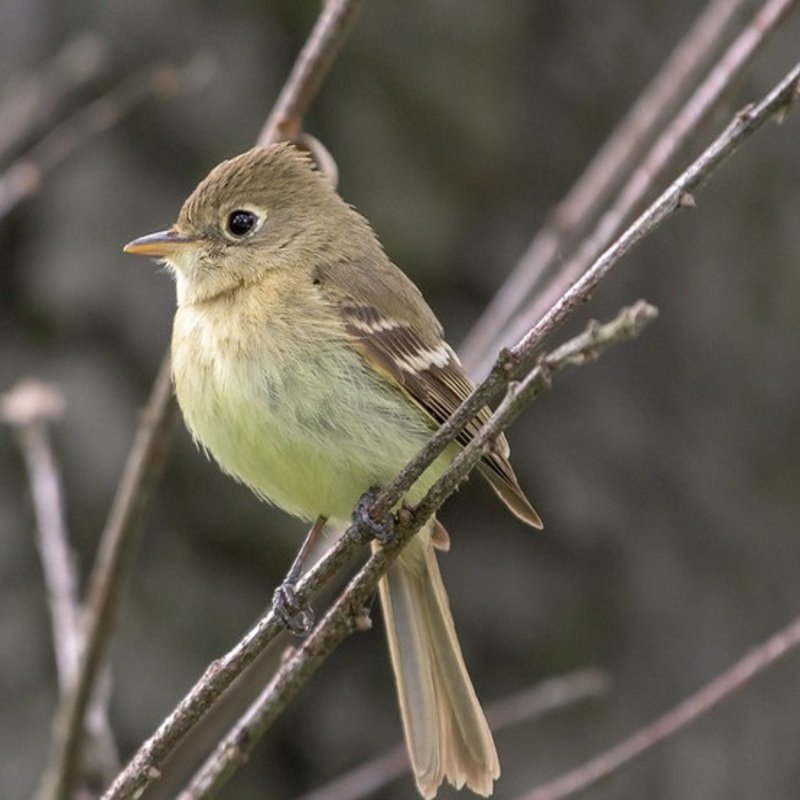The Pacific-slope Flycatcher, Empidonax difficilis is a small insect-eating bird belonging to the Tyrannidae family. It is native to western North America’s coastal regions, including the Pacific Ocean and the southern Gulf of California, as well as northern British Columbia and southern Alaska, but has been displaced by the Cordilleran Flycatcher in the inland regions.
Quick Overview: Empidonax Difficilis – Pacific-Slope Flycatcher
Body size: Around 5.5 in (14 cm) and a weight of 11 g (0.4 oz)
Main colors: Olive-Brown, Yellow, Olive-Gray, White
Range: Western United States
Migratory Bird: Yes
Best time of the year to see in the U.S.: March, April, May, September, October, November
Conservation Status: Least Concern
Pacific-slope Flycatcher Description
Olive-brown upperparts, yellow neck, and belly, olive-gray breast; little flycatcher. White and extended eye-ring. Dark wings with two pale bands. Bill is lengthy and dark in the top mandible, but bright yellow in the lower mandible.

Size
These birds have a length of 5.5 in (14 cm) and a weight of 11 g (0.4 oz). Their wings could range from 5.5 in (14 cm).
Feeding
As a flycatcher, it will perch and, upon spotting a flying bug, will pursue it without apparent effort. They contribute significantly to the control of insect populations, particularly mosquitoes, and also consume caterpillars and spiders.
Habitat
Pacific-slope flycatchers inhabit damp, shaded habitats such as coniferous woods and places adjacent to shaded streams.
Behavior
Pacific-slope flycatchers, like other flycatchers, feed by perching on an exposed perch and sallying forth to gather insects in the air and on foliage. Pacific-slope flycatchers travel between wintering and breeding regions on a yearly basis. Outside of the breeding season, they are mostly solitary.
Empidonax Difficilis Scientific Classification
- Kingdom: Animalia
- Phylum: Chordata
- Subphylum: Chelicerata
- Class: Aves
- Order: Passeriformes
- Family: Tyrannidae
- Genus: Empidonax
- Species: Empidonax difficilis
Best time of the year to see
In the United States, the best time of year to see these birds are during the Spring season (March-May) and during the Autumn season (September – November).
Distribution of the Pacific-slope Flycatcher l in the USA
This species breeds from southern Alaska to northern Baja California, along the Pacific Coast. Breeding occurs as far inland as western Alberta. Winters south of the US-Mexico border, along the coast of Mexico, from Baja California.
The Pacific-slope Flycatcher can be found in the following states in the United States – Washington, Oregon, Nevada, Colorado, Wyoming, and Montana.
